Haz clic aquí para leer en español
Written by Fidgit
She was clearly a leader in the community. I had seen her early that morning, clipping along the single sidewalk which connected the town of Boca San Carlos through the morning drizzle. An hour later she sauntered back past, surrounded by four other kids all chatting. She was in her element, with a tiny purse in the shape of Mini Mouse’s face over her shoulder.
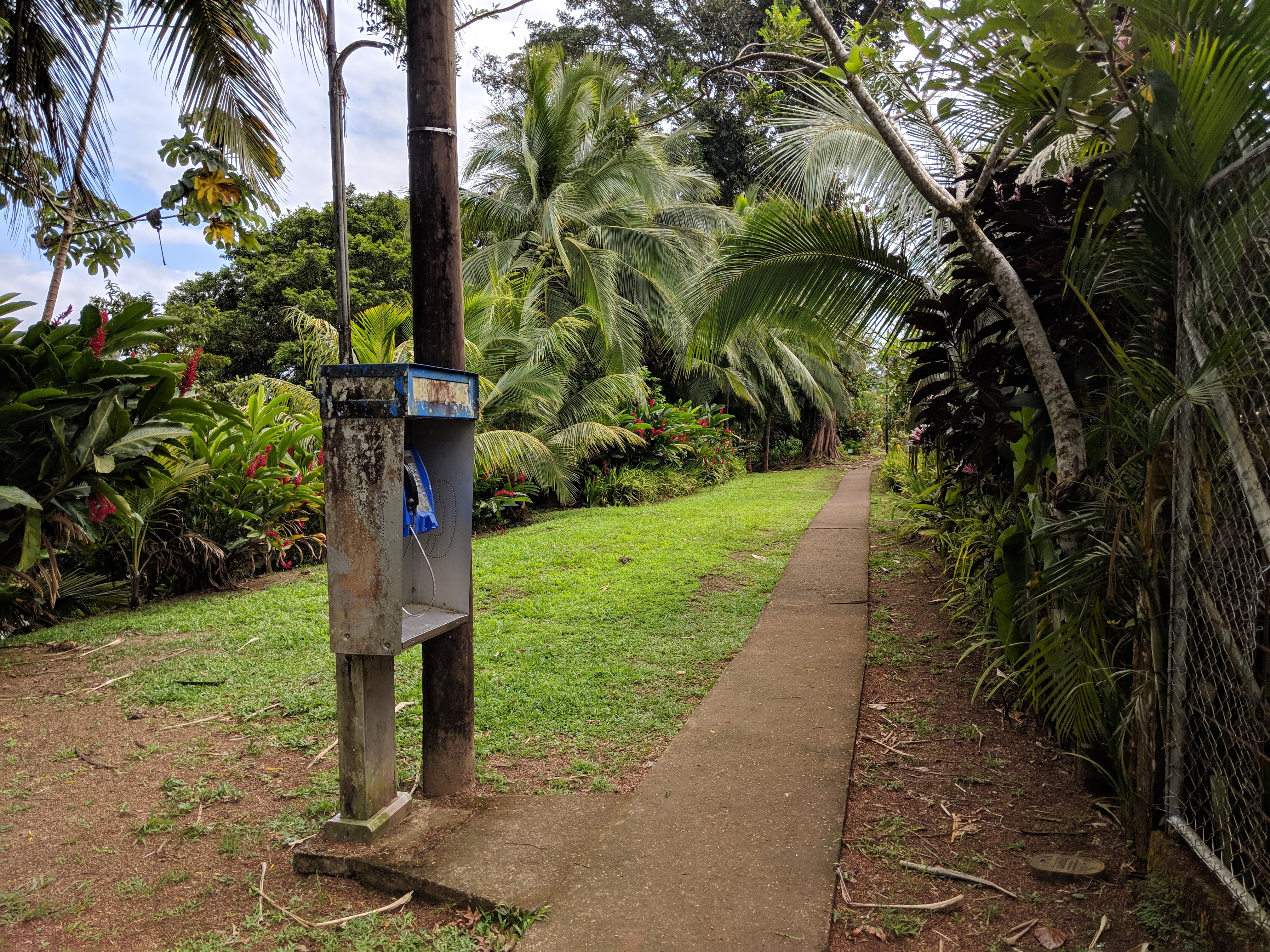
Later in the morning, she and several other children had gone down to the water, escorted by one of the teenagers and played in the river, jumping in from the side of a cayuco which was landed there. The teenager was the lookout, scanning the water for crocodiles or other dangers as the little ones splashed and squealed and washed.
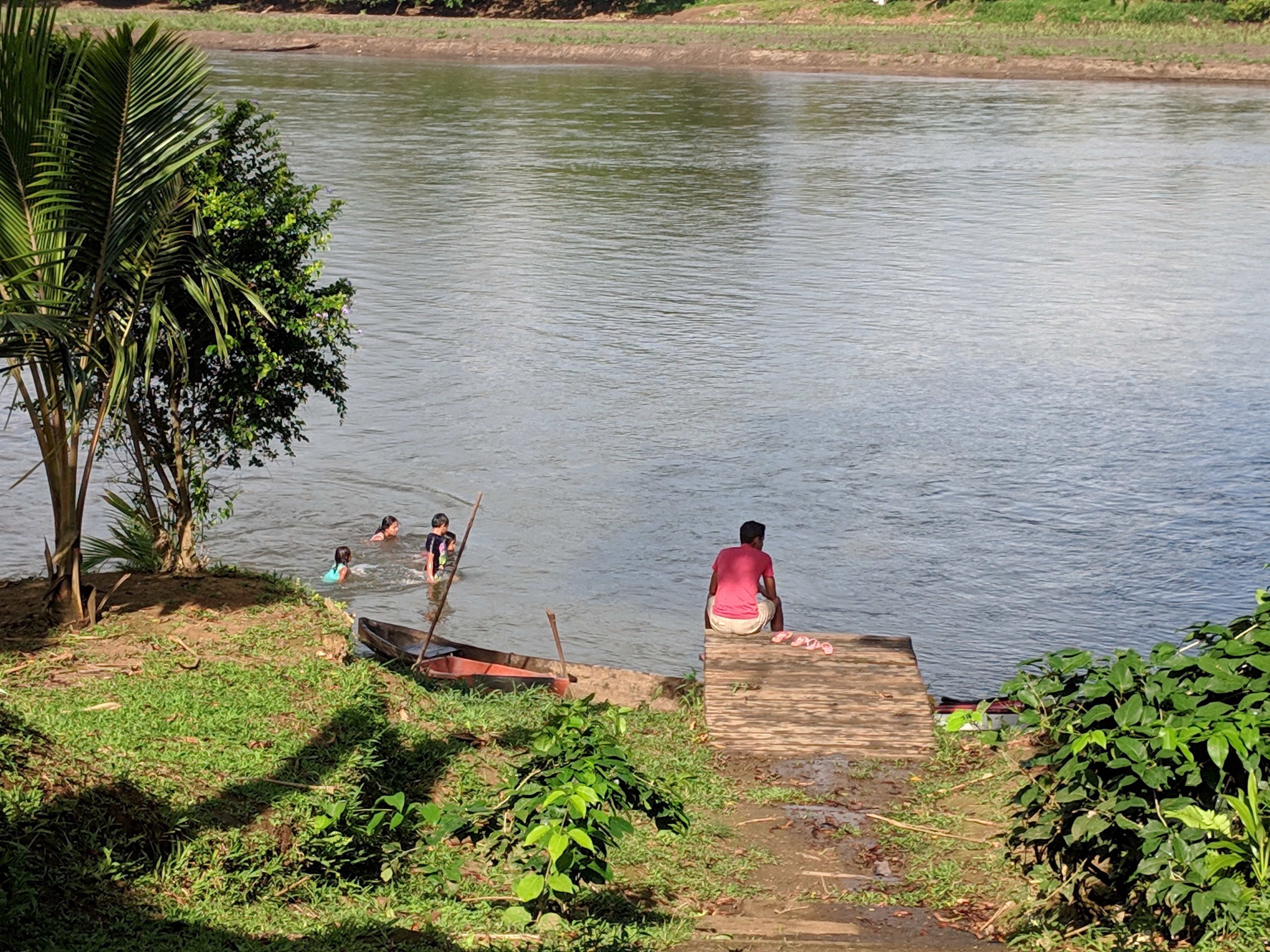
That evening, she joined us on the wrap around porch of the hostel as we ate dinner. The low building of creaking wood had once been a hospital and later was used by the CIA to distribute weapons during one of the many seasons of conflict. She clambered onto the bench of the long table where we sat, and our host prepared her a plate. She picked at the food but it was clearly the company which had attracted her interest.
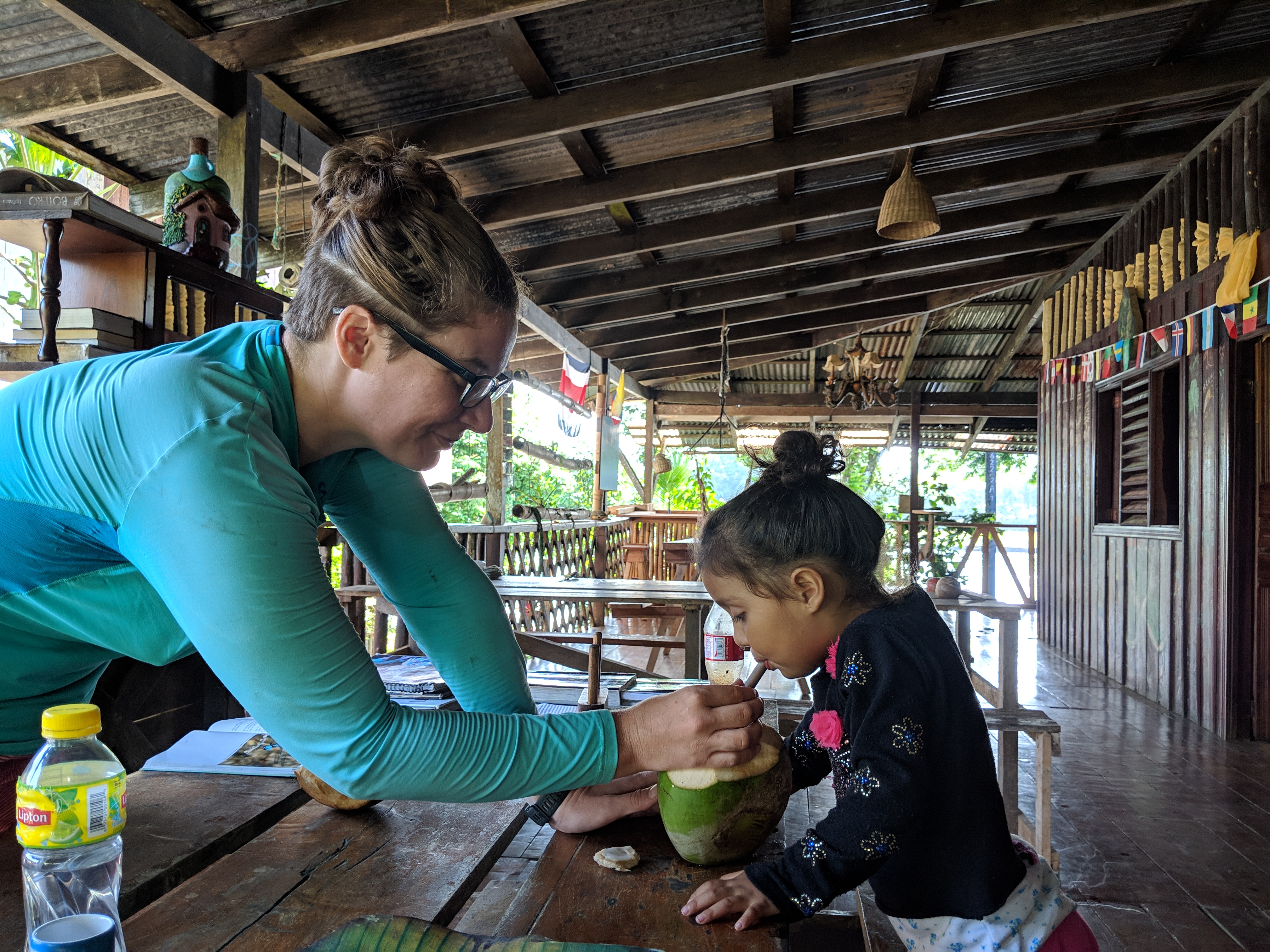
The next morning, she joined little Ana and I at the end of the dock. We sat, dangling our feet above the sticky mud and watched the confluence of the San Carlos and San Juan. The 1967 eruption of Volcan Arenal had blanketed the area, casting it into a false winter. Relieving some 50 people of their lives, capturing many of them in that final instant of surprise, staring and pointing toward the volcano.
A modern day Pompei.
According to an elder storyteller at the bar/restaurant the night before, the eruption had produced enough sand to build a road which could wrap around the world 4 times. Certainly it had been enough to produce a sandbar which beached our kayaks when we turned up the desemboque.
We tossed twigs and small coconut shells into the river and watched them slowly drift.
“Have you ever seen a crocodile?” I thought I asked in Spanish.
She continued to peel apart the blade of grass in her tiny hands. “No, we don’t eat the crocodiles, but we do eat the turtles,” she replied.
Life in this jungle emulated the river itself; a languid flow punctuated by catastrophe. Already I had been told tales of animal attacks, eruptions, floods, hurricanes, raids, disease.
It is a place where people have learned to mind their own business as a matter of survival. With something resembling pride, the father of a family I was chatting with said that people who came into the area were surprised to learn that out here life was worth nothing. “Kill someone, throw them in the river, they never existed.” The little girl opened the clasp of her purse, checked the contents, and snapped it shut again.
The history of humans on Rio San Juan has been both as a connection and a cause for division.
At one time, it was the principle avenue to connect the Pacific and the Atlantic Oceans. During the California gold rush, it was the quickest way to get from New York to California. The likes of Mark Twain made the trip by steam ship and buggy. Several times it has been considered for development into a canal connecting the two oceans. In the 1890s construction began but was abandoned in favor of the Panama Canal. Again in 2014 a Chinese company broke ground from the Pacific Coast but after several years of civil unrest and push-back against the political forces backing the effort, the project has again been all but abandoned.
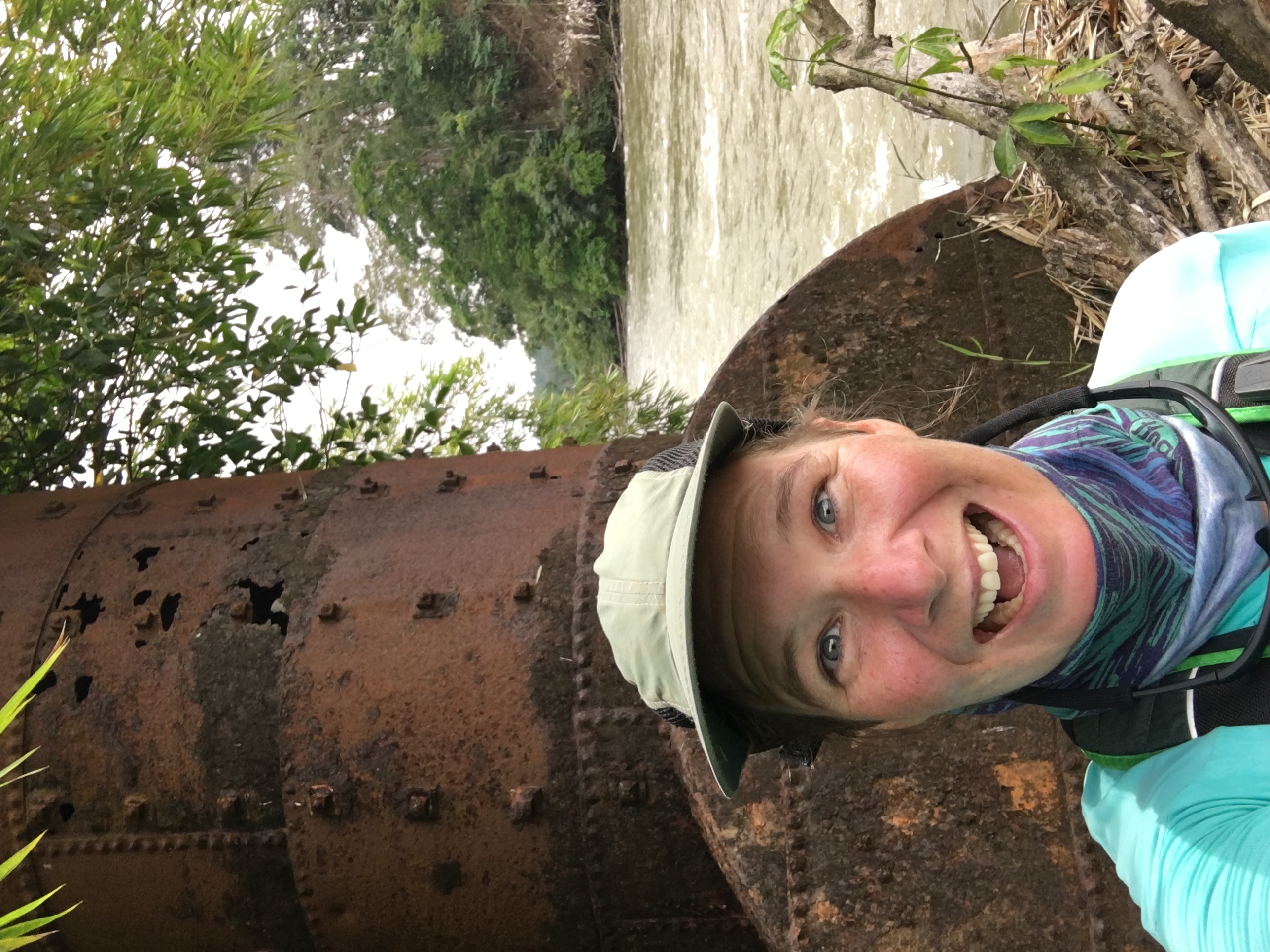
Before that, even, in the era of conquest and pirates, the Spanish held the river. The English were the pirates, looting gold and attacking the Spanish fortifications of El Castillo. Strategically located on a high point above a bend in the river, it offered a view several kilometers down the river, giving the defenders plenty of time to mount an assault on any ships coming upstream.
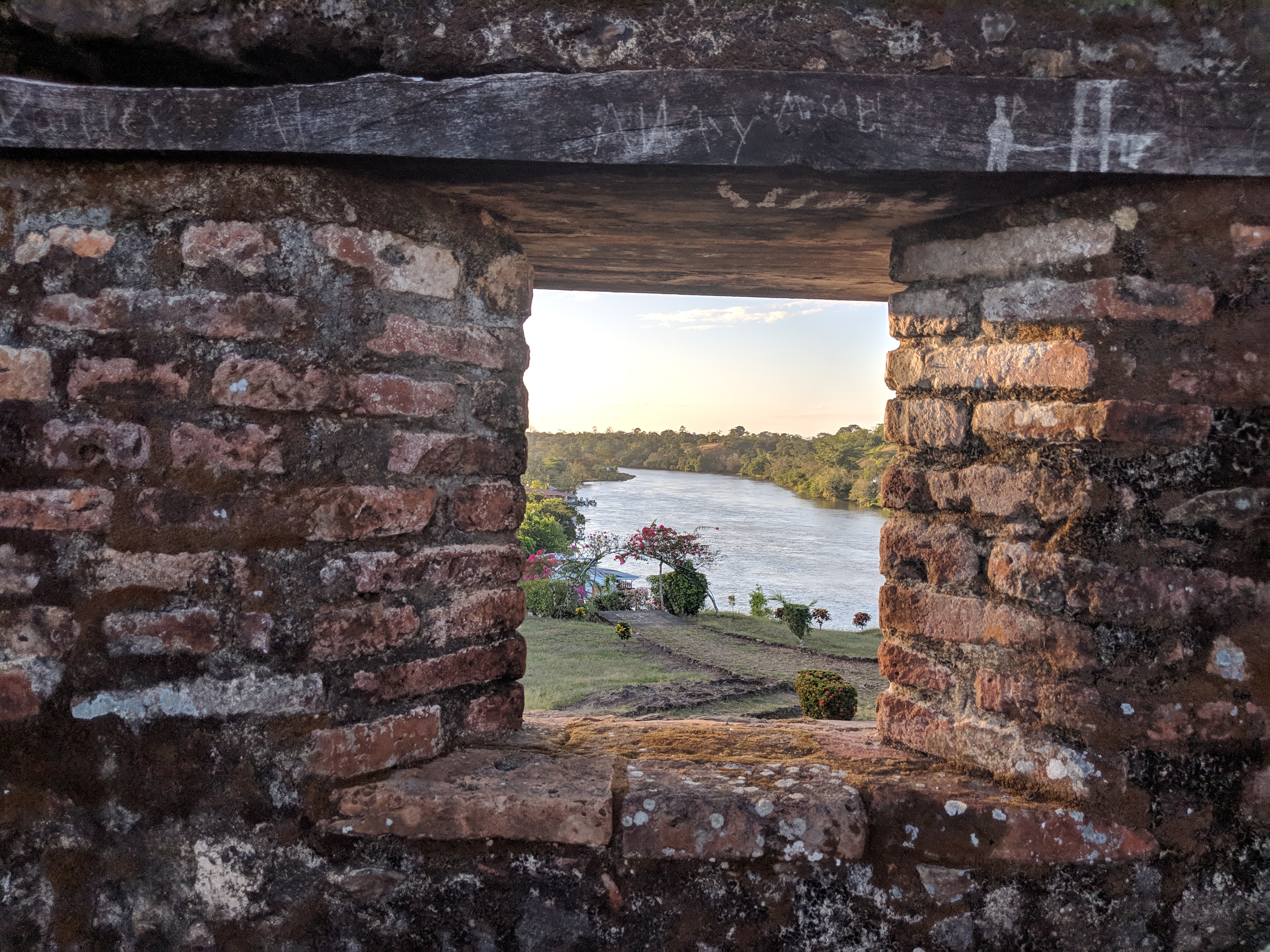
One of the stories in the fort’s museum tells of a 19 year old Spanish woman, Rafaela Hererra, who in 1762 rallied the defense against an English attack. She was the first to pick up arms and on her third round, she shot the English Commander. That night she had the soldiers soak bed sheets in alcohol, light them on fire, and set them adrift on branches floating down the river toward the British ships, which caused their retreat.
 Kayaking the river gave us a taste of the flow and stress of life on the river. The waters were easy enough to navigate; however, sharing the murky waters with crocodiles the size of our boat and having to stop every day to present our papers to a new outpost of Nicaraguan military wore on us. While the men were friendly enough and generally just curious, it is difficult to normalize a conversation when the other person has an AK47 strapped to their back.
Kayaking the river gave us a taste of the flow and stress of life on the river. The waters were easy enough to navigate; however, sharing the murky waters with crocodiles the size of our boat and having to stop every day to present our papers to a new outpost of Nicaraguan military wore on us. While the men were friendly enough and generally just curious, it is difficult to normalize a conversation when the other person has an AK47 strapped to their back.
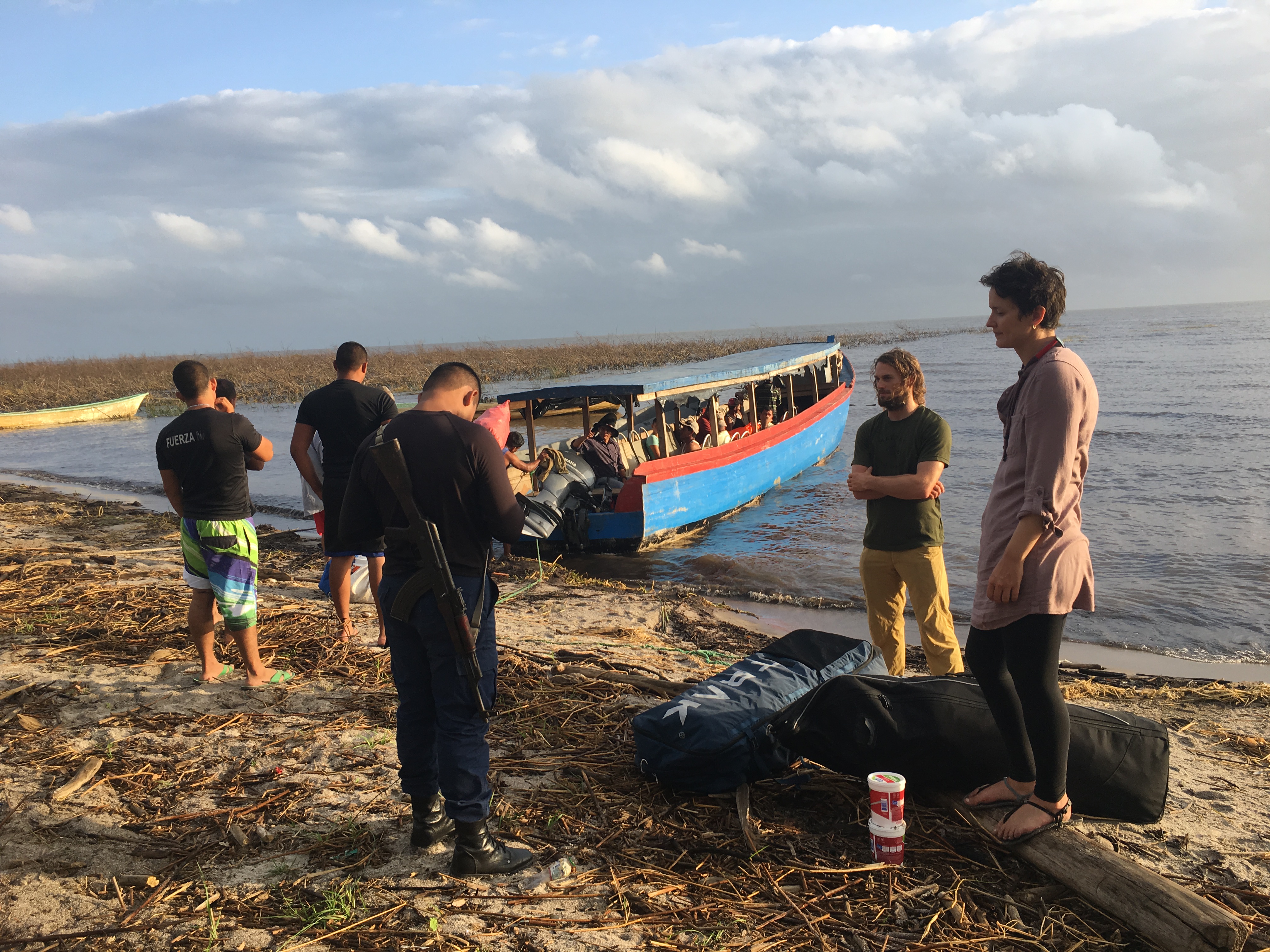
On a morning stop at one of the five outposts, the military, immigration, and national park officials all came out to greet us. I got to speaking with the park guard, gushing about the dawn concert of monkeys and birds singing loudly.
“Yeah, everyone wants to announce that they are still alive,” he smiled. “It’s annoying because it makes it impossible to sleep in.”
He is right.
[youtube https://www.youtube.com/watch?v=GEapo5a2N1A&w=560&h=315]
Nicaragua is the poorest country in Central America and the rustlings of political unrest is choking potential income sources, such as tourism. Of the many things which struck me about the kind and hardy people who live there, was the lack of clean water, even for those living on a river bank.
This month we encourage support for clean water projects working in the country. One such group are Water for People who have a high review on Charity Navigator. Consider the impact you can have!
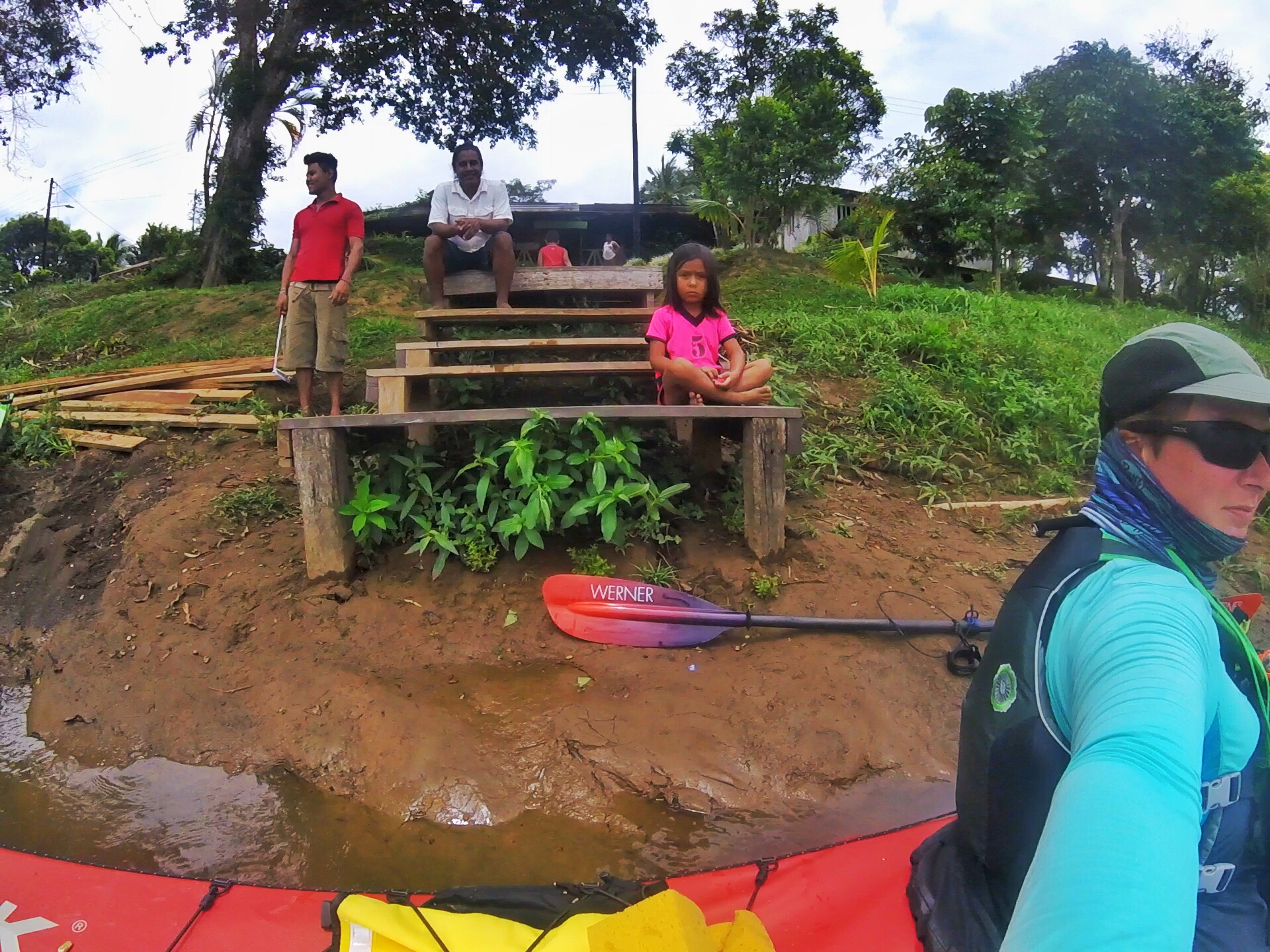
La vida en el Río San Juan
Escrito por Fidgit
Traduccion por Fabiana
Ella era claramente una líder en la comunidad. La había visto temprano esa mañana, recortando a lo largo de la acera que conectaba la ciudad de Boca San Carlos a través de la llovizna de la mañana. Una hora más tarde, ella pasó de vuelta, rodeada de otros cuatro niños, todos conversando. Ella estaba en su elemento, con un pequeño bolso en forma de la cara de Mini Mouse sobre su hombro.

Más tarde en la mañana, ella y varios niños habían bajado al agua, escoltados por uno de los adolescentes y jugabaron en el río, saltando desde el costado de un cayuco que estaba allí. El adolescente era el vigilante, chequeando el agua en busca de cocodrilos u otros peligros mientras los pequeños salpicaban, chillaban y se lavaban.

Esa tarde, ella se unió a nosotros en el porche del albergue mientras cenábamos. El edificio bajo de madera chirriante había sido un hospital y luego fue utilizado por la CIA para distribuir armas durante una de las tantas temporadas de conflicto. Se sentó en el banco de la mesa larga donde nos sentamos y nuestro anfitrión le preparó un plato. Ella se comió la comida, pero era evidente que era la compañía lo que había atraído su interés.

A la mañana siguiente, ella se unió a la pequeña Ana y a mí al final del muelle. Nos sentamos, colgando nuestros pies sobre el barro pegajoso y observamos la confluencia de San Carlos y San Juan. La erupción de Volcán Arenal en 1967 cubrió el área y la convirtió en un falso invierno. Aliviando a unas 50 personas de sus vidas, capturando a muchas de ellas en ese último instante de sorpresa, mirando y apuntando hacia el volcán.
Un Pompei en día moderno.
Según un anciano narrador en el bar/restaurante la noche anterior, la erupción había producido suficiente arena para construir una carretera que podía rodear el mundo 4 veces. Ciertamente, había sido suficiente para producir un banco de arena que encallara nuestros kayaks cuando subimos el desemboque..
Arrojamos ramitas y pequeñas cáscaras de coco al río y las observamos ir despacio.
“¿Alguna vez has visto un cocodrilo?” Pensé que lo había preguntado en español.
Ella continuó desprendiendo la brizna de hierba en sus pequeñas manos. “No, no comemos los cocodrilos, pero sí comemos las tortugas”, respondió ella.
La vida en esta jungla emulaba el río mismo; Un flujo apático recalcando la catástrofe. Ya me habían contado historias de ataques de animales, erupciones, inundaciones, huracanes, redadas, enfermedades.
Es un lugar donde las personas han aprendido a ocuparse de sus propios asuntos como parte de su supervivencia. Con algo parecido al orgullo, el padre de una familia con quien conversaba dijo que las personas que venían al área se sorprendieron al saber que la vida aquí no valía nada. “Mata a alguien, tiralo al río, nunca existió”. La niña abrió el cierre de su bolso, comprobó el contenido y volvió a cerrarlo.
La historia de los humanos en Río San Juan ha sido ambas una conexión y una causa de división.
En un momento, fue la principal vía para conectar los océanos Pacífico y Atlántico. Durante la fiebre del oro de California, era la forma más rápida de llegar de Nueva York a California. Los escritos de Mark Twain hicieron el viaje en barco de vapor y en carruaje. Varias veces se ha considerado su desarrollo para un canal que conecte los dos océanos. En 1890 comenzó la construcción del canal pero fue abandonada a favor del Canal de Panamá. Una vez más, en 2014, una empresa china comenzó a abrir camino desde la costa del Pacífico, pero después de varios años de disturbios civiles y de represiones de las fuerzas políticas que respaldan el esfuerzo, el proyecto ha sido nuevamente abandonado.

Incluso antes de eso, en la era de la conquista y los piratas, los españoles ocupaban el río. Los ingleses eran los piratas, saqueando oro y atacando las fortificaciones españolas de El Castillo. Ubicada estratégicamente en un punto alto en la curva del río, ofrecía una vista a varios kilómetros río abajo, dando a los defensores tiempo suficiente para montar un asalto en cualquier barco que se encontrará subiendo el río.

Una de las historias en el museo del fuerte habla de una mujer española de 19 años, Rafaela Hererra, quien en 1762 se unió a la manifestación contra un ataque inglés. Ella fue la primera en levantar las armas y en su tercera ronda, le disparó al Comandante Inglés. Esa noche hizo que los soldados empaparan las sábanas en alcohol, los prendieran fuego y los pusieran a la deriva en las ramas que flotaban río abajo hacia los barcos británicos, lo que provocó su retirada.
 Kayakeando el río nos dio una idea del fluir y el estrés de la vida en el río. Las aguas eran bastante fáciles de navegar; sin embargo, compartir las aguas turbias con cocodrilos del tamaño de nuestro bote y tener que parar todos los días para presentar nuestros documentos a una nueva alcabala del ejército nicaragüense era desgastante. Si bien los hombres fueron lo suficientemente amables y generalmente curiosos, es difícil tener una conversación con normalidad cuando la otra persona tiene un AK47 colgando en su espalda.
Kayakeando el río nos dio una idea del fluir y el estrés de la vida en el río. Las aguas eran bastante fáciles de navegar; sin embargo, compartir las aguas turbias con cocodrilos del tamaño de nuestro bote y tener que parar todos los días para presentar nuestros documentos a una nueva alcabala del ejército nicaragüense era desgastante. Si bien los hombres fueron lo suficientemente amables y generalmente curiosos, es difícil tener una conversación con normalidad cuando la otra persona tiene un AK47 colgando en su espalda.

En una parada matutina en uno de los cinco puestos de avanzada, los militares, los funcionarios de inmigración y los parques nacionales salieron a saludarnos. Me puse a hablar con la guardia del parque, hablando sobre el concierto del amanecer de monos y pájaros cantando en voz alta.
“Sí, todos quieren anunciar que aún están vivos”, sonrió. “Es molesto porque hace que sea imposible dormir”.
Él está en lo correcto
[youtube https://www.youtube.com/watch?v=GEapo5a2N1A&w=560&h=315]
Nicaragua is the poorest country in Central America and the rustlings of political unrest is choking potential income sources, such as tourism. Of the many things which struck me about the kind and hardy people who live there, was the lack of clean water, even for those living on a river bank.
This month we encourage support for clean water projects working in the country. One such group are Water for People who have a high review on Charity Navigator. Consider the impact you can have!







Comments (3)
Love the story about Rafaela Herrera! What an amazing woman to lead troops against the English in 1762. -Rebecca
According The the story the men were preparing to run but when they saw a young woman take up arms so bravely, they all followed her.
I’d like to write a post about her, cool Shero that she is! I read several sites about her last night after your reference to her. -Rebecca